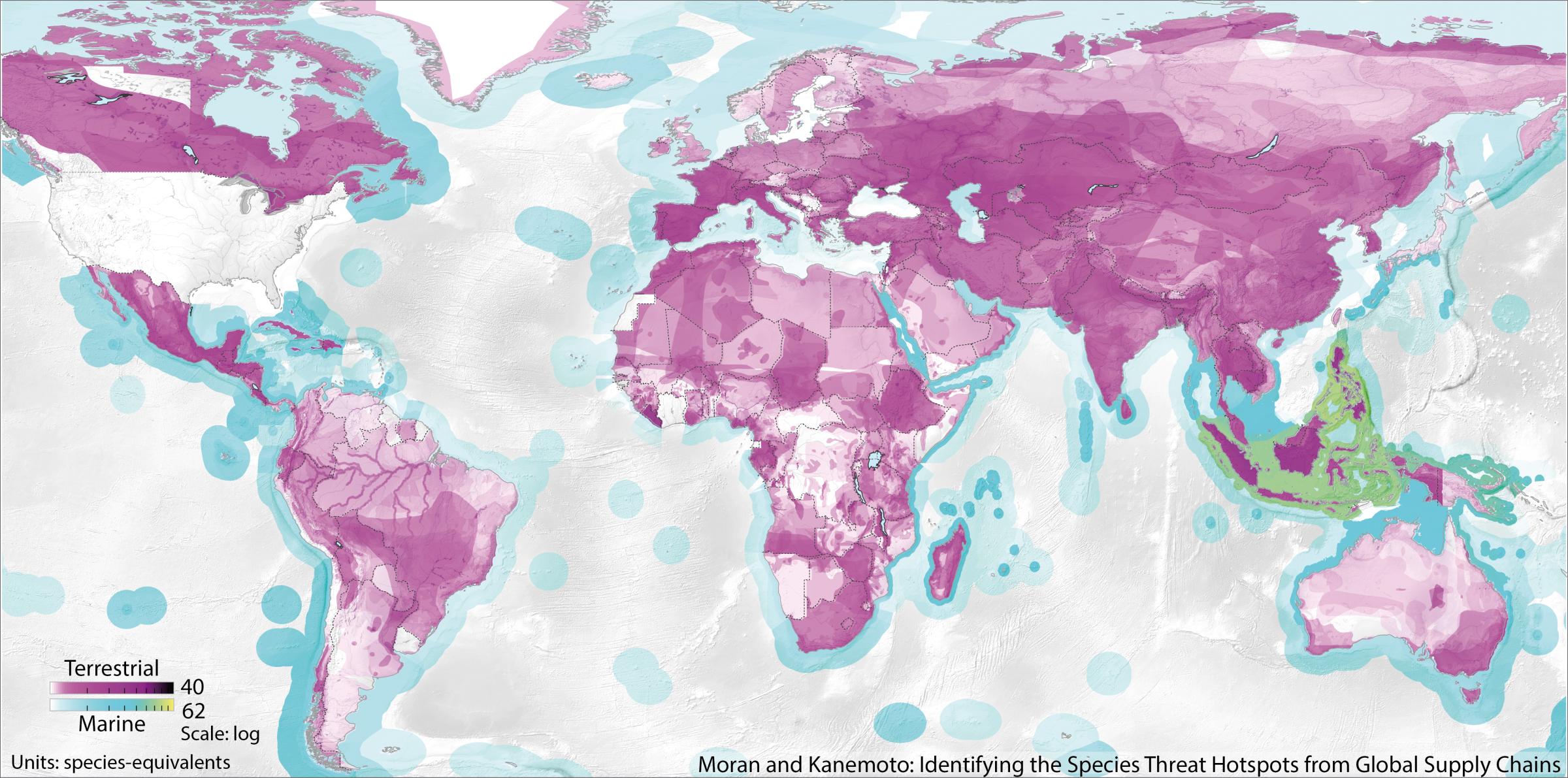Purchasing most consumer goods—from furniture to cell phones—inevitably takes a toll on the environment and harms endangered species. But understanding exactly which regions were most affected has been a guessing game.
Now, new research published in the journal Nature Ecology & Evolution identifies global hot spots that goods exported to the United States, China, Japan and the European Union harm the most. U.S. consumption particularly threatened land species from parts of Southeast Asia and Madagascar, as well as southern Europe, the Sahel region of Africa, coastal Mexico, Central America and Central Asia.
Researchers behind the study evaluated the supply chains of a slew of different products to trace the effects of goods on 6,800 species listed as threatened by the International Union for the Conservation of Nature (IUCN). The threats to species caused by the supply chains included a range of things including forestry destroying habitats, pollution and urban development.

“Once you connect the environmental impact to a supply chain, then many people along the supply chain, not only producers, can participate in cleaning up,” says study author Daniel Moran, a researcher at the Norwegian University of Science and Technology, in a press release.
Conservation spending totals some $6 billion annually, but 90% of that figure is put to use in developed countries far away from the most endangered locations, according to the study. The results — and the methods behind them — could help conservationists better allocate resources to address both the source of harmful consumer goods and the markets where they are sold, researchers said.
The new study is the latest to use big data to help endangered species. A 2015 study in the journal Proceedings of the National Academy of Sciences used the same methods used to track terrorist networks to map the illegal wildlife trade and determine the key players.
The new research follows the beginning of a mass extinction event on Earth, only the sixth in the planet’s history, thanks to human influence. The globe has lost a quarter of its species in the last 500 years, according to recent research in the journal Science.
More Must-Reads From TIME
- The 100 Most Influential People of 2024
- The Revolution of Yulia Navalnaya
- 6 Compliments That Land Every Time
- What's the Deal With the Bitcoin Halving?
- If You're Dating Right Now , You're Brave: Column
- The AI That Could Heal a Divided Internet
- Fallout Is a Brilliant Model for the Future of Video Game Adaptations
- Want Weekly Recs on What to Watch, Read, and More? Sign Up for Worth Your Time
Write to Justin Worland at justin.worland@time.com